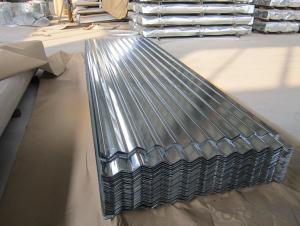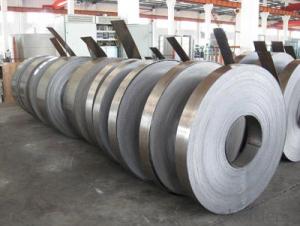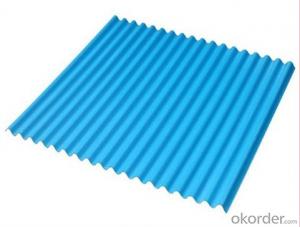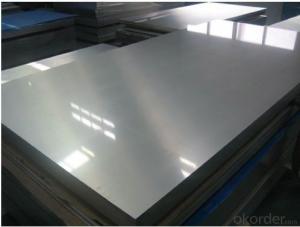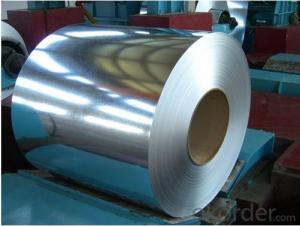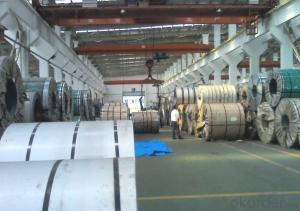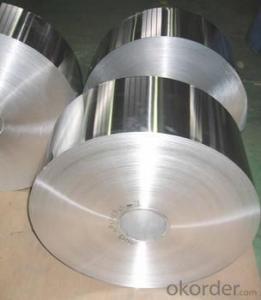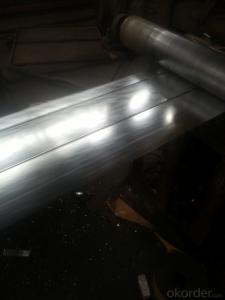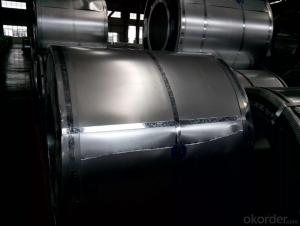Best Cold Rolled Steel Coil JIS G 3302 Walls Steel Coil ASTM 615-009
- Loading Port:
- Tianjin
- Payment Terms:
- TT OR LC
- Min Order Qty:
- 33 kg/m²
- Supply Capability:
- 11 kg/m²/month
OKorder Service Pledge
OKorder Financial Service
You Might Also Like
1.Structure of Cold Rolled Steel Description:
The raw material of cold rolled steel coil/sheet is high quality hot rolled product, and after pickling continuous rolling, degreasing, annealing,skin pass,slitting and cut to length line etc. Along with it many kinds of new technology and new process of global cold rolling production have been applied. Therefore the quality of the goods could be guaranteed. The product is widely used in outdoor and interior decoration, furnishing manufacturing, home appliance, automobile etc. it has a lower melting point than steel and good castability properties.[1] Certain compositions of cast iron, while retaining the economies of melting and casting, can be heat treated after casting to make malleable iron or ductile iron objects. Steel is also distinguishable from wrought iron (now largely obsolete), which may contain a small amount of carbon but large amounts of slag.
2.Main Features of the Cold Rolled Steel:
• Excellent process capability
• Smooth and flat surface
• Workability, durability
• Excellent heat resistance performance
• High strength
• Good formability
• Good visual effect
3.Cold Rolled Steel Images
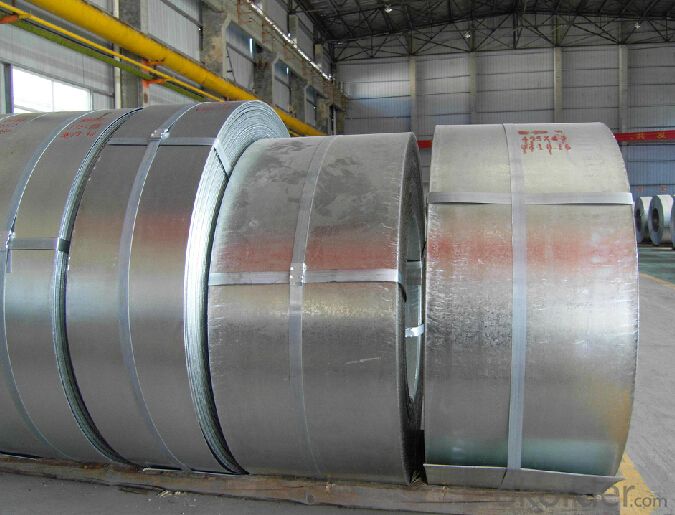
4.Cold Rolled Steel Specification
Standard:AISI,ASTM,DIN,GB,JIS,JIS G3302 ASTM 653M EN10142
Grade: Q195~Q345
Thickness: 0.16mm~1.5mm,0.16-1.5mm
Width: 1250,600-1250mm
Coil weight:3-12 MT
Coil ID:508/610mm
Chemical composition:
C | Si | Mn | Cr | Ni | P | S |
0.150 | 0.476 | 11.231 | 12.50 | 0.900 | 0.039 | 0.010
|
5.FAQ of Cold Rolled Steel
We have organized several common questions for our clients,may help you sincerely:
1.How about your company?
A world class manufacturer & supplier of castings forging in carbon steel and alloy steel,is one of the large-scale professional investment casting production bases in China,consisting of both casting foundry forging and machining factory. Annually more than 8000 tons Precision casting and forging parts are exported to markets in Europe,America and Japan. OEM casting and forging service available according to customer’s requirements.
2.How to guarantee the quality of the products?
We have established the international advanced quality management system,every link from raw material to final product we have strict quality test;We resolutely put an end to unqualified products flowing into the market. At the same time, we will provide necessary follow-up service assurance.
3. How long can we receive the product after purchase?
Usually within thirty working days after receiving buyer’s advance payment or LC. We will arrange the factory manufacturing as soon as possible. The cargo readiness usually takes 15-25 days, but the shipment will depend on the vessel situation.
- Q:Are steel strips suitable for making electrical connectors?
- Yes, steel strips can be suitable for making electrical connectors. Steel offers good conductivity and high strength, making it an ideal material for connectors that require durability and efficient electrical transfer. However, other factors such as corrosion resistance and cost-effectiveness should also be considered when selecting materials for electrical connectors.
- Q:How do steel strips contribute to dimensional stability in various applications?
- Steel strips contribute to dimensional stability in various applications due to their inherent properties such as high tensile strength, rigidity, and resistance to warping or bending. These properties ensure that steel strips maintain their shape and dimensions even under extreme conditions, preventing any significant dimensional changes. As a result, they provide stability and precision in a wide range of applications, including construction, automotive manufacturing, electrical appliances, and packaging industries.
- Q:What are the typical dimensions of steel strips?
- Steel strips come in varying dimensions, depending on their specific application and industry standards. Nonetheless, there are commonly used dimensions that are widely accepted. Typically, steel strips are thin and flat pieces of steel that are produced in a continuous strip form. The width of these strips can vary from a few millimeters to several hundred millimeters, depending on the intended purpose. Common widths range between 20 mm and 200 mm. The desired strength and flexibility determine the thickness of steel strips, which can range from very thin gauges (less than 1 mm) to thicker gauges (up to 10 mm or more). Gauge, a standardized measurement system for sheet metal thickness, is often used to specify the thickness. The length of steel strips can be as long as the manufacturing process permits or as short as the customer requests. Standard lengths are usually based on the size of the coil or roll in which the steel strip is produced. These coils can vary in length from a few meters to several kilometers. It is important to remember that these dimensions are not fixed and can be tailored to specific requirements. Some steel strips may have unique dimensions depending on the industry they serve, such as automotive, construction, or manufacturing. Therefore, it is advisable to consult the relevant industry standards or specifications to determine the typical dimensions for a particular application.
- Q:How do steel strips perform in magnetic applications?
- Steel strips perform well in magnetic applications as they exhibit good magnetic properties. They can be easily magnetized and demagnetized, making them suitable for various magnetic applications such as in transformers, motors, and magnetic sensors.
- Q:What is the electrical resistivity of a steel strip?
- The electrical resistivity of a steel strip can differ based on several factors, including the steel's composition, temperature, and the presence of any impurities. On average, the electrical resistivity of steel usually falls around 6.5 x 10^-7 ohm-meters. However, it's worth mentioning that this value may slightly vary for different steel types or specific alloys utilized in the strip. Moreover, the electrical resistivity can also fluctuate with temperature, typically increasing as the temperature ascends.
- Q:How do steel strips compare to other materials like aluminum or copper?
- Steel strips are generally stronger and more durable compared to materials like aluminum or copper. They have a higher tensile strength and can withstand heavier loads. Additionally, steel strips are more resistant to corrosion, making them suitable for various industrial applications. However, aluminum and copper offer better electrical conductivity and are often preferred in electrical and electronic industries. Ultimately, the choice between steel, aluminum, or copper depends on the specific requirements of the application.
- Q:How are steel strips tested for elongation?
- The tensile test is used to evaluate the elongation of steel strips. This method involves subjecting a sample of the strip to an incrementally increasing force until it breaks. During the test, the elongation of the strip is measured to determine the mechanical properties of the material. To conduct the tensile test, a small section of the strip is cut and shaped with a marked gauge length. This designated region will be used to measure elongation. The sample is then placed into a machine that can apply a controlled force. The machine gradually applies force to the sample, causing it to stretch. As the force increases, the machine measures the elongation of the gauge length using devices like extensometers. The elongation is typically expressed as a percentage increase in the gauge length. The test continues until the strip fractures, at which point the maximum force it can withstand, known as the ultimate tensile strength, is recorded. The tensile test also provides information about other important mechanical properties, such as yield strength, modulus of elasticity, and ductility. By evaluating the elongation of steel strips, manufacturers and engineers can determine if the material meets the necessary specifications and standards for different applications. This information is crucial in assessing the suitability of the strip for uses like construction, automotive, or manufacturing industries.
- Q:Are steel strips suitable for construction purposes?
- Yes, steel strips are suitable for construction purposes. Steel strips have several characteristics that make them an ideal choice for construction projects. Firstly, steel strips are known for their high strength and durability. They have a high tensile strength, which allows them to withstand heavy loads and resist deformation. This makes them suitable for various construction applications such as structural framing, roofing, and reinforcement. Moreover, steel strips are highly resistant to corrosion, which is a crucial factor in construction projects, especially in areas with high humidity or exposure to harsh environments. Unlike other materials like wood or concrete, steel strips do not rot, warp, or decay over time, ensuring the longevity and stability of the structure. Furthermore, steel strips are flexible and can be easily shaped and formed into different sizes and dimensions, making them versatile for various construction needs. They can be cut, welded, and bent to fit specific requirements, allowing for customization and adaptability in construction projects. In addition to their physical properties, steel strips are also cost-effective in the long run. While the initial investment may be higher compared to other materials, the durability and low maintenance requirements of steel strips result in lower repair and replacement costs over time. This makes them a cost-efficient choice for construction purposes. Overall, steel strips are a suitable material for construction purposes due to their strength, durability, resistance to corrosion, flexibility, and cost-effectiveness. They offer numerous advantages that contribute to the quality, stability, and longevity of construction projects.
- Q:How are steel strips processed for flexibility?
- Steel strips are processed for flexibility through a series of techniques such as cold rolling, annealing, and tempering. Cold rolling reduces the thickness of the steel strip while increasing its length, making it more flexible. Annealing involves heating the strip and then slowly cooling it to enhance its ductility. Tempering further improves flexibility by reheating the steel and then cooling it rapidly. These processes help to manipulate the microstructure of the steel, allowing it to bend and flex without breaking.
- Q:Can steel strips be used in architectural applications?
- Yes, steel strips can definitely be used in architectural applications. Steel is a versatile and durable material that can be shaped into various forms, including strips, making it suitable for a wide range of architectural uses. Steel strips can be used for cladding, roofing, and siding applications, providing structural support while also enhancing the aesthetic appeal of a building. Additionally, steel strips are often used for decorative purposes, such as creating feature walls or accents, due to their sleek and modern appearance. Overall, steel strips offer architects and designers a flexible and reliable option for incorporating metal elements into their architectural projects.
1. Manufacturer Overview |
|
|---|---|
| Location | |
| Year Established | |
| Annual Output Value | |
| Main Markets | |
| Company Certifications | |
2. Manufacturer Certificates |
|
|---|---|
| a) Certification Name | |
| Range | |
| Reference | |
| Validity Period | |
3. Manufacturer Capability |
|
|---|---|
| a)Trade Capacity | |
| Nearest Port | |
| Export Percentage | |
| No.of Employees in Trade Department | |
| Language Spoken: | |
| b)Factory Information | |
| Factory Size: | |
| No. of Production Lines | |
| Contract Manufacturing | |
| Product Price Range | |
Send your message to us
Best Cold Rolled Steel Coil JIS G 3302 Walls Steel Coil ASTM 615-009
- Loading Port:
- Tianjin
- Payment Terms:
- TT OR LC
- Min Order Qty:
- 33 kg/m²
- Supply Capability:
- 11 kg/m²/month
OKorder Service Pledge
OKorder Financial Service
Similar products
New products
Hot products
Hot Searches
Related keywords







